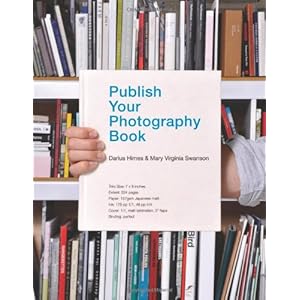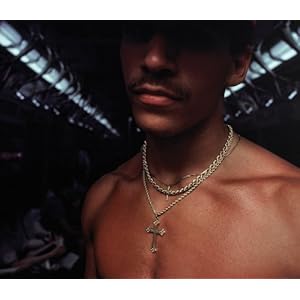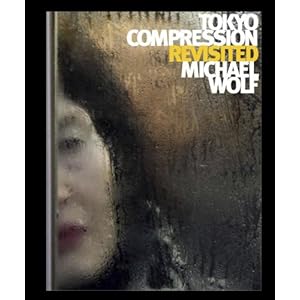Trawling through Amazon the other day I came across this book by Darius D. Himes and Mary Virginia Swanson. Intrigues about a book that talks about creating books I ordered a copy. Fearing that this might be another weak how to book, I was pleasantly surprised to obtain a readable guide to the overall publication process.
I was half expecting something that dwelt on layout and form, instead this book provides a real insight into the way that books are developed, created, marketed and ultimately sold. As well as talking to the mechanics of the process, the book spends much time discussing the intent of the artist and how that vision is turned into paper and cardboard. Backing this up are many case studies and examples of real books and how they came into being. What did surprise me was how small the print run is for a successful photo book, typically around 3,000 copies, clearly this is not a route to riches. However, what it reinforced was that with the right concept and preparation it is possible to get a book into print. It also includes self funding and self publishing, even including an interview with the founder of Blurb.
This has set me to thinking about my developing my own "Art" book - why the quote marks? Well, I have published over 10 photo books using Blurb, a mixture of wedding albums for friends and chronicles of diving holidays. I have developed a certain style with these books, especially for my most recent wedding albums - the brides were impressed, and I did try to add a degree of style to the books, avoiding the evils of weird backgrounds and photo montages, however, they are not art:
The diving books are even further away from art although they are modeled on successful in print photo books. This is the best one thus far:
Borneo's Hidden Rainforest by Shaun Clarke | Make Your Own Book
As yet I have no illusions about actually printing a book using traditional means, but do believe that it is time to start thinking about creating a book with deeper meaning and a more distinct narrative. Much of what I am working on at present is designed to be seen as part of a set, not a s individual photographs, but conceptually I cannot see any of them becoming worthy of book treatment.
I do have an idea that might translate well into book form and that is a revisit to my final assignment in People and Place, a study of the Munich subway system:
During development of this assignment I discarded many good images, that I think would work well together as a themed photo book. I appreciate this is not groundbreaking documentary photography, but it is a graphical subject that fascinates me. Maybe something that I could develop into a short photobook, published with Blurb as gifts to friends and family for Christmas. I want to experiment with typography and layout, in particular I am infleunced by the design and style of Martin Parr's "Small World" and "The Last Resort". As I step towards Year 3 I am increasingly aware of a need to develop threads in my work and a way of presenting the continuity of my work, a book is my current thinking.
I have also been very impressed by two recent purchases. First of all I was enticed by Apertures reprint of Bruce Davidson's "Subway", a dark somber look at the New York subway system. Completed in the 1980's before Guiliani cleaned up the city these photographs capture the grime and fear that the subway then engendered. The images mix menace, with squalor and the utter boredom of commuters. You can almost smell the system in the photographs
As yet I have no illusions about actually printing a book using traditional means, but do believe that it is time to start thinking about creating a book with deeper meaning and a more distinct narrative. Much of what I am working on at present is designed to be seen as part of a set, not a s individual photographs, but conceptually I cannot see any of them becoming worthy of book treatment.
I do have an idea that might translate well into book form and that is a revisit to my final assignment in People and Place, a study of the Munich subway system:
During development of this assignment I discarded many good images, that I think would work well together as a themed photo book. I appreciate this is not groundbreaking documentary photography, but it is a graphical subject that fascinates me. Maybe something that I could develop into a short photobook, published with Blurb as gifts to friends and family for Christmas. I want to experiment with typography and layout, in particular I am infleunced by the design and style of Martin Parr's "Small World" and "The Last Resort". As I step towards Year 3 I am increasingly aware of a need to develop threads in my work and a way of presenting the continuity of my work, a book is my current thinking.
I have also been very impressed by two recent purchases. First of all I was enticed by Apertures reprint of Bruce Davidson's "Subway", a dark somber look at the New York subway system. Completed in the 1980's before Guiliani cleaned up the city these photographs capture the grime and fear that the subway then engendered. The images mix menace, with squalor and the utter boredom of commuters. You can almost smell the system in the photographs
Contrasting this is Michael Wolf's "Tokyo Compression Revisted", bringing a different horror from the subway. Each image shows peoples faces crammed against the windows of the always overcrowded Tokyo subway system. As with his work in Hong Kong it is the repetition of form that generates the message of the book, a depressing parade of humanity crammed into modern cattle trucks, their faces seen behind beaded condensation dripping down the inside of the subway windows.
Sharing similar subject matter, but with dramatically different treatments, these two books have one more thing in common. They are superbly produced, beautiful objects in their own right. In both cases every page is identically constructed, every picture has the same framing and dimensions, Davidison uses Landscape, whilst Wolf puts his travelers in portraits. Both contain visual narrative and end symbolically. Davidson ends on a positive note with a sunset lighting up the tracks, Wolfs back cover is opposite, a man raises a finger in comment on the photographer.
My own exploration of Munich's subway is quite different and very clinical, a study of an almost empty system, whose stations stand as art objects in their own right. Now where did I store those images...









No comments:
Post a Comment